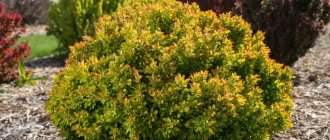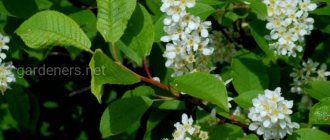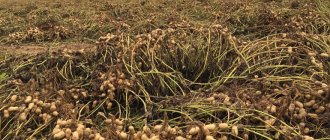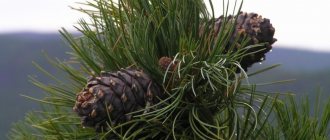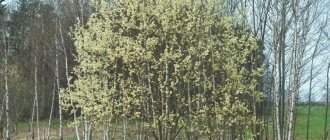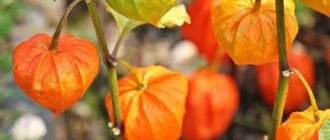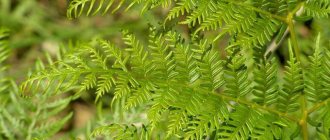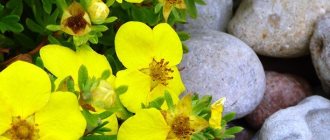Water chestnut: benefits and harm - qualities that should be taken into account if you want to lose extra pounds or diversify your menu with healthy products. The fact is that chilim has unique properties, but it is difficult to find fruits on the shelves of retail chains or in online stores in our country, despite the fact that the plant grows in central Russia. The taste characteristics are similar to chestnut, the nut has a pleasant aroma, can add a piquant note to dishes, and is a real find for those who want to eat healthy. The rich vitamin and mineral composition, antibacterial, antitumor properties make the product indispensable in the diet, but there are still those who should refrain from consuming it. Detailed information about the benefits of water chestnut is presented in the text below.
Floating bagel
What it is
An annual plant called water chestnut, as well as floating bagel, grows in aquatic conditions and is:
- standing water;
- lakes;
- slow flowing rivers;
- creek.
The crop is prone to the formation of thickets and grows on muddy soils of the wild. It is not grown under artificial conditions (aquariums). Growing area:
- Eurasia;
- Africa;
- China;
- Middle zone, Siberia (southern part), Far East, Altai Territory of the Russian Federation.
Chinese breeders have been cultivating the plant for 3,000 years. The nut is grown in the south, center, east of the European part of the Eurasian continent, in Turkey, the state of Japan, on the Indian Peninsula, in Azerbaijan, Kazakhstan, and Georgia. Classification – refers to:
- a genus called Rogulnik;
- to the Derbennikov family.
The chilim water chestnut produces nuts that are similar in appearance to a bull's head. In the East, the seeds are consumed boiled as a light snack. Description:
- height – not less than 3600 and not more than 5000 centimeters;
- location of stems - in water;
- root shape – pinnately branched;
- the color of the root system is green;
- foliage is divided into two types - underwater/surface;
- the underwater type is located opposite the root system on the stem, the shape is linear;
- the above-water type completes the stem, location is fruit petioles, floats on the water surface;
- the surface foliage has the appearance of a rosette, the shape of the plates is oval, the teeth are uneven, the size is from two to three centimeters;
- color of flowers - white;
- the location of the flowers is the axils of the leaves;
- pollination occurs by insects;
- flowering period - late May - early June;
- components of a flower – sepals (4 pieces) + petal + stamen + pistil;
- fruits are black-brown nuts;
- nut length – not less than 2.0 and not more than 2.5 centimeters;
- each nut has 4 sharp horns;
- core color – white;
- The ripening period for nuts is the end of August - the first ten days of September.
Ripe fruits, separated from the petioles, are carried by water to other parts of the lake or other cultural territory where the nut grows and germinate during the first two years. A unique property is the ability to grow nuts over the next twelve years after ripening.
[product_block id=”10999"]
Chilim water chestnut: photo and description
As was written above, the fruits of the crop, which grows in reservoirs and spreads in Eurasia and Africa, retain their fertile properties for 12 years and have an interesting appearance.
Description of fruits:
- externally similar to a bull's head;
- black-brown;
- the shell is hard, containing an edible, juicy kernel inside;
- have sharp horns;
- number of horns – four;
- They have a pleasant aroma with a sweetish note.
It is known that chilim sea nut can be consumed in the form of:
- cheese;
- boiled;
- baked
To make cereals and flour, fruit kernels are ground.
Chilim nut
What does a water chestnut look like?
Summarizing the data presented above, we can summarize that the water chestnut has green roots located in the lower part of the stem, which can be confused with leaves, then underwater leaves are located opposite, and on the surface of the water there are oval-shaped surface leaves with teeth at the ends. Fruits ripened on cuttings in the form of two-centimeter bull heads, black-brown in color, with four points, are torn off and carried with water to other places where they subsequently germinate.
Water chestnut: Red Book
The culture was included in the list of plants protected by the Red Book during the period of Soviet Russia, but in 2008 chilim was excluded from the document. Since that time, the protection of chilim is still carried out, but by local authorities in the regions of our state. To this day, the plant is in Appendix I of an international agreement called the Berne Convention, which is signed by forty countries of the world, including the Russian Federation.
Appendix I is intended for flora species subject to strict conservation measures. Additional security measures have been taken:
- Belarus;
- Latvia;
- Lithuania;
- Poland;
- Ukraine.
Where does chilim water chestnut grow?
Summarizing the above about the territory of distribution of the plant, we can conclude that the crop grows in the territory of the following countries and states of the world:
- African countries;
- located in the southern, central, eastern region of the European part of the continent;
- India;
- China;
- states of Japan;
- Vietnam;
- Pakistan;
- Georgia;
- Azerbaijan;
- Turkey;
- Russian Federation.
Distribution area in Russia;
- European part;
- Western Siberia (south);
- Far East;
- Altai region.
The fruits were consumed by ancient peoples as they are now potatoes.
[p[product_block id=”10988"]p>
[pro[product_block id=”11005"]
Chilim nut: beneficial properties
Residents of the Russian Federation, despite the fact that during the period of the existence of Kievan Rus, the fruits of the crop served as a means to satisfy hunger, little was known about the healing qualities of the plant. Traditional healers in Asian countries use the entire plant in the treatment of many diseases.
The positive effect on the body is expressed by the following effects:
- accelerating the wound healing process;
- fixing (relevant for diarrhea);
- improved functioning of organs such as the liver, gall bladder;
- choleretic;
- antitumor (including malignant types of neoplasms);
- antiviral;
- antimicrobial;
- antispasmodic;
- calming;
- tonic;
- increased concentration of attention;
- reducing the amount of cholesterol in the circulatory system;
- improved functioning of the heart muscle, visual organs, and genitourinary system;
- general strengthening;
- supportive;
- restorative;
- cleansing (removes waste and toxins from the intestines);
- increased emotional background;
- antidepressant.
It is known that chilim river nut is the basis for the manufacture of medicines and is used in folk medicine in the form of freshly squeezed juice, decoction, and tincture.
A tincture prepared from the fruit is suitable for internal use and external use, and acts as a treatment for diseases such as herpes. Application to the epidermis helps eliminate acne and inflammation.
Benefit for health
It is noteworthy that in the CIS this wonderful plant is not in demand as a medicinal product. However, in the Asian world it is widely used as a folk remedy for many ailments. Rogulnik is used in the treatment of various diseases by Chinese healers and Tibetan monks. It has a wide range of indications for use:
- as a diuretic (used in the treatment of kidneys and diseases of the genitourinary system);
- as an antimicrobial and antiviral agent;
- for diarrhea and other gastrointestinal disorders;
- treatment of tumors of various origins;
- normalization of the liver and gall bladder;
- wound healing;
- antispasmodic;
- increases immunity;
- sedative;
- tonic.
Vodka tincture is used to clean blood vessels. For this purpose, you need to take ten chilim kernels and pour a glass of vodka over them, then leave for ten days. Take the medicine 3 times a day, 1 tablespoon. The duration of treatment is ten days, then a ten-day break should be taken. After this, the course is repeated.
Freshly squeezed nut juice should be applied to herpes blisters, as well as bites of various insects. For inflammation in the mouth and throat, you can use water chestnut juice diluted with water in a ratio of 10:1. It is also effectively used in the treatment of inflammatory skin diseases, as well as acne.
Preparations based on this plant should be used with caution, as there is a possibility of allergic reactions to it. For medicinal purposes, chilim should be used carefully, as there is a possibility of allergies.
For medicinal purposes, chilim should be used carefully, as there is a possibility of allergies.
Water chestnut: harm, contraindications
The low energy value of a product does not mean that you should not monitor the amount consumed daily. Chilim contains selenium, which has an immunostimulating effect, but in moderation. An excess of this mineral, which can accumulate, can lead to impaired functioning of internal organs, cirrhosis of the liver and other diseases. Consuming excessively large quantities can lead to nut rejection in the form of:
- nausea;
- vomiting;
- dizziness;
- migraines.
Contraindications include the presence/condition of:
- individual intolerance;
- allergic reactions;
- gestation period;
- breastfeeding period;
- ulcers, gastritis during periods of exacerbation;
- chronic constipation.
When diagnosing chronic forms or exacerbations of diseases that are not listed in the list of contraindications, you should consult your doctor before including this product in your diet.
Calorie content of chilim
The calorie content of bagel is only 200 kcal, which is less compared to other types of similar products, so it can be used in proper nutrition and diet for weight loss. Vegetarians and people intolerant to animal protein can also consume water chestnuts. This nut is popular as a snack, in cabbage, cucumber, and radish salads. Chilim combines harmoniously with garlic, onions, celery, cilantro, and parsley. When used in diets, it is recommended to drink ginger tea after eating the nut. Nutritional value per 100 grams:
| Proteins, g | Fats, gr | Carbohydrates, g | Ash, gr | Water, g | Calorie content, kcal |
| 11,9 | 3,4 | 55,4 | 2,4 | 10,4 | 200 |
The kernel of the chilim fruit is extremely high in calories. It contains up to 50-55% starch.
As much as possible per day
There is no information in most sources about what the maximum daily intake for consuming this product is, but it is still worth remembering that, despite the low calorie content and the reduced content of easily digestible vegetable fats compared to other types of nuts, you should not eat more than 20 -30 grams per day. The specified amount will not lead to an excess of minerals and tannins and guarantees a positive effect on the body.
Water chestnut: application
The plant was used by the ancient peoples of the world to satisfy the feeling of hunger; the following areas of use of the culture can also be distinguished:
- food;
- medical;
- medicinal.
In countries located in the Asian part of Eurasia, chilim is a snack that is served fried or salted. The taste characteristics are similar to sweet chestnuts, so they can be eaten fresh or boiled. Also, kernels extracted from ripe fruits serve as the basis for flour or cereals.
The culture is used as feed for livestock, the medicinal properties of all parts of the sea nut are known - the juice squeezed from the leaves/flowers, due to its pronounced antiseptic properties, is used as a therapeutic agent for:
- diseases of the visual organs;
- gonorrhea;
- tumors of various origins and nature;
- animal bites (insects, snakes).
Culture makes the human body more resistant to the adverse effects of the environment and has an immunostimulating effect.
Chilim also serves as the basis for the production of tripazide, which is used in the treatment of atherosclerosis. Indian and Chinese medicine uses the whole nut as a remedy:
- fixing;
- antispasmodic;
- tonic;
- astringent;
- diuretic;
- astringent;
- sedative;
- sweatshop.
Fresh water chestnuts are used in the following types of medicine:
- Tibetan;
- Japanese;
- Chinese.
The fruits are used fresh in the treatment of the following diseases:
- impotence;
- diseases associated with impaired functioning of an organ such as the kidneys;
- dispensation.
conclusions
Water chestnut belongs to relict plants. In ancient times, it was often eaten and used in the manufacture of various potions that were used in medicine. But in our time, its beneficial properties are practically forgotten; only Eastern sages still appreciate and widely use this product. But you can use it not only to prepare delicious dishes, but also to use it for cosmetic and medicinal purposes. Which would undoubtedly come in handy, because there are no side effects from using Rogulnik.
Chilim is a beautiful plant. Its fruits have a mysterious shape and are often used to make various decorations and decorations. Previously, talismans and amulets were also made from them, believing that this nut brings good luck, happiness and protects from evil.
More fresh and relevant information about health on our Telegram channel. Subscribe: https://t.me/foodandhealthru
We will be grateful if you use the buttons:
Chilim: what you can cook
There are a great many variations of use: from fresh, boiled, baked nuts to inclusion in dishes. The product serves as an addition to salads, desserts, baked goods, you can also make a puree from the kernels or a healing tincture from leaves or flowers, which you can drink or wipe problem areas (acne).
Water chestnut in cooking
Water chestnut: puree, recipe
Required:
- peeled kernels/200 grams;
- milk/150 grams;
- butter/15 grams;
- sugar/half teaspoon;
- salt/pinch.
Step-by-step preparation scheme:
- Sort the nuts, peel them, and chop them using a kitchen knife.
- Place the kernels in a saucepan, add the required amount of milk, and put on fire.
- As it boils, cook for 30 minutes. Over low heat with the lid closed.
- When the kernels become soft when pierced with the tip of a knife, remove from heat.
- Mash the mixture, add the remaining ingredients, stir.
- Serve the dish hot.
Water chestnut: infusion, recipe
Required:
- leaves/flowers/20 grams;
- the water is hot.
Step-by-step preparation scheme:
- Mark the leaves or flowers into the pan.
- Add water.
- Place the mixture in a water bath.
- Keep in a water bath for at least twenty minutes.
- Remove from heat, cover with a lid, leave for 45-60 minutes.
- Strain.
Drink 100 milliliters in 30 minutes. before meals three times a day. For outdoor use, use twice as many flowers/leaves.
Where is the plant used?
Since time immemorial, water chestnut has been used as a food ingredient and medicine. Not only the fruits, but also the leaves, stems and roots have beneficial properties. But the most useful thing is the fruit itself.
It can be boiled, fried, baked and even eaten raw. Nuts were also used to make cereals, flour and sweets. There are cases where people survived thanks to chestnut fruits, as they saved them from starvation.
Different people have their own preferences. Therefore, in different countries, chilim was used and prepared differently. In many eastern countries it was considered sweet and eaten with honey. In India it was served with various spices. And we, residents of Altai and the northern regions, still consider it and use it as a talisman.
Use in cosmetology
A concentrated infusion of chilim is used in cosmetology to treat acne, pimples and skin inflammation.
Cooking
Water chestnuts can be eaten raw or cooked. The kernels can be boiled, fried, dried and even made into flour to make all sorts of pastries such as pancakes, pancakes and pancakes. In Asian countries, chilim is often used instead of potatoes in soups. Chilim is also used in salads and stews, combined with various herbs and spices or as a garnish. Chilim can also be used as an independent dish. When baked or fried, chilim tastes like chestnuts. The most popular and delicious European recipes with water chestnuts:
- Cucumber puree.
- Cucumber in bacon.
- Stewed croissants with apples.
- Cucumber in milk.
There are many other recipes for making chilim, especially in Asian cuisine. Feel free to experiment with it, creating your own “homemade” recipes.
Important: Water chestnuts are very sensitive to storage conditions. Unpeeled pods can be stored for a long time in a cool place, but peeled pods go rancid after just 2 days.
Water chestnut stew
To prepare this dish you will need:
- 250 grams of peeled water chestnuts.
- 250 grams of apples:
- oil;
- sugar (to taste);
Peel the apples and chop them finely. Place the walnut kernels in a saucepan and cook until soft, then add the apples, butter and sugar. Simmer until the apples are soft.
Bacon wrapped water chestnut
To prepare the dish you will need:
- 1.5 kg fresh bacon;
- 250 g canned cauliflower fruits.
To prepare the sauce:
- 1 cup tomatoes or ketchup;
- 1 cup brown sugar;
- 1 teaspoon Worcestershire sauce;
Cut the bacon into thin slices. Place a cone in the center of each, roll and secure with a toothpick. Place the rolls in a baking dish and pour the sauce over them.
To prepare the sauce, combine ketchup, sugar and Worcestershire sauce and bring to a boil. Bake the dish in the oven for 50 minutes at 180 degrees.
Water chestnut dish
Chilim puree
To prepare the dish you will need;
- 200 grams of water chestnuts;
- 150 grams of milk;
- oil;
- sugar.
Boil the nuts until soft. Then remove from the milk and strain through a sieve. Add the milk in which the nuts were cooked and mix well. Heat the puree and simmer for some more time. Mashed potatoes can be used as a complement to meat and fish.
Water chestnuts are good to add to various salads, which will give your dishes a piquant taste. They will also make you fuller and healthier.
Water chestnut, to which people have given more than one name, was used as food in Russia, China, India, Japan and other countries. In addition, the plant is often used for medicinal purposes and in cosmetology.
It is still an ingredient in some cosmetics and medications. Walnut dishes can decorate any table. In addition, water chestnut is very nutritious and healthy.
Medicine
Chilim is used throughout Asia. Water chestnuts are used in many Chinese medicine recipes, they are especially popular in Tibet and China, but in Russia they are not so popular. For medicinal purposes in the East it is used as follows:
- diuretic for the treatment of kidney pathology,
- antiviral – helps treat herpes, gonorrhea, tonsillitis,
- a remedy for the treatment of diarrhea,
- sedative properties used to combat stress,
- general strengthening agent for body regeneration,
- analgesic.
Chestnut has also found use in pharmaceuticals; its extract is an ingredient in the drug trapazide, necessary for the treatment of atherosclerosis. In Tibet, water chestnut is used in various combinations to treat dysuria and genitourinary disorders. In India, all parts of cinquefoil are used for choleretic, diaphoretic and antispasmodic effects. Thus, juice squeezed from horse chestnut leaves and flowers is used to treat diseases such as:
- gonorrhea,
- GERD,
- cancer,
- snake bites.
For eye diseases, juice from the leaves and flowers of horse chestnut is used, it is diluted with water in a ratio of 1:3 and dropped into the eyes.
Traditional medicine recipes
In folk medicine, penstemon is used in various forms: infusions and decoctions are prepared from it, juice is squeezed out of leaves and stems, but raw materials are also used and dried.
Rosemary tincture is useful in the treatment of influenza and viral infections, and also has a sedative effect. The tincture should be prepared by steaming 2 tablespoons of the dried plant in boiling water, then cool and filter through cheesecloth. Drink 3 times a day.
Rosemary juice is used to treat eye diseases. Wash the leaves and stems well and chop finely. Squeeze the juice through cheesecloth and dilute with boiling water in a 1:1 ratio. The juice can be drunk or used as eye drops.
A nut tincture taken to cleanse blood vessels. Wash the fruits, chop and pour vodka or diluted alcohol in the ratio of half a liter of alcohol per 150 g of nuts. Infuse the tincture for two weeks in a dark place. Stir the tincture every day. After boiling, strain and take the finished product 3 times a day before meals, 25 g.
There are no contraindications to the use of horse chestnut. Not recommended only for those who have been diagnosed with hypersensitivity to the plant.
In other areas
Few people know that Chilim horse chestnut has tonic properties, so this product is often used as an additive to cosmetics. If rashes appear on the skin, they can be wiped with horse chestnut juice; this juice is ideal for treating oily and combination skin.
Due to its unusual and attractive appearance, water chestnut is used to make souvenirs, pendants, and amulets for the home.
Chilim: correct selection and storage
Since it is unlikely that you will be able to purchase water chestnuts in Russia, since it is a rather rare product, to buy it you will need to go to a Chinese or Asian market, where shops sell medicinal nuts. If such an opportunity does arise, it is worth considering the following:
- the color is black-brown, uniform, without any spots or darkening;
- there are no soft spots on the surface;
- elastic, dense peel, without chips or cracks;
- without moisture;
- with a pleasant smell;
- without traces of rot and mold.
Taking a nut in your hand, it is worth assessing its weight in comparison with its appearance - too light means that the kernel inside has dried out. You should also not forget that stale nuts may contain spores of fungi that are deadly to the human body, called aflatoxins. The presence of moisture on the surface, an unpleasant odor, or mold may indicate that mycotoxins are present inside the kernels. For this reason, you should not buy and consume kernels that do not meet the freshness parameters specified above or have been stored for too long.
The fruits should be stored unpeeled, preferably dried first, then placed in non-woven bags or sealed jars, put in a dry, ventilated place, protected from direct sunlight or in the refrigerator.
Growing in aquarium conditions
Anyone who wants to grow damn nuts on their plot can try and, if all the “wishes” of the plant are met, propagate and distribute chilim at least within their family. To do this, you will need a large aquarium or even a pond with a dense layer of muddy soil placed on the bottom. For seeds to germinate, a temperature of at least +23°C is required. Seeds should be planted in the spring, after soaking them in camphor alcohol and removing the shells from the germination site.
If sprouts have appeared and the first leaves have grown, you need to transplant the water chestnut into another container or pond.
The most important thing when growing chilim is to monitor the purity of the water, and in order for it to be crystal clear, it will have to be changed very often.
Also, large shellfish should not be allowed into this reservoir - they will quickly eat the plant. If after a month there are no flowers, it means the experiment failed and the nut is irretrievably dead. It is better to grow the plant in several reservoirs and have spare seeds.
Brief summary
- Water chestnut grows in European and Asian countries, as well as in the Russian Federation. Previously, the plant was included in the list of rare species protected by the Red Book, but in 2008 it was excluded from the document.
- The chemical composition contains B vitamins, magnesium, calcium and other minerals, due to which chilim has a calming effect and improves the functioning of the cardiovascular and nervous systems.
- It is advisable for pregnant women and nursing mothers to abandon previously unused products so as not to cause an allergic reaction or individual intolerance in the baby.
- The product is distinguished by a high content of indigestible dietary fiber, which removes waste and toxins from the body, thereby improving digestion and accelerating metabolism. This property is important when losing weight.
- When choosing, it is worth considering a number of criteria, because stale nuts may contain aflatoxins, which are deadly to humans.
Benefit for health
The healing properties of rogulnik have been known since ancient times. Now those who manage to grow it at home use absolutely all parts for therapeutic purposes. They help with almost all diseases:
- vessels;
- infections of the renal apparatus and urinary system;
- Gastrointestinal tract;
- immune and nervous system.
Promotes instant healing of wounds resulting from snake and insect bites, treats boils, herpes and purulent sore throat (for the throat, it is enough to dilute 15 ml of water chestnut juice with 150 ml of water and gargle several times a day). The juice of the leaves helps with eye and dental diseases, and the nuts are used against impotence, viruses, tumors, and atherosclerosis. It is taken to restore strength after complicated illnesses.
So far, not a single case of intolerance to this plant is known or recorded. But, despite this, before preparing medicinal decoctions, alcoholic tinctures and juices (fresh juices), rinses or lotions with chilim, you must consult with qualified doctors, since there is a possibility of an allergic reaction in people predisposed to it.
The devil's nut was also fed to animals, but today this practically does not occur, because the plant has become rare and is under the protection of security organizations. In addition to treating diseases, culinary products are prepared from water chestnut, added to salads and desserts, and cosmetics against acne are made. It’s interesting that many even make amulets, souvenirs and beautiful pendants from rogulnik.
The devil's nut can be eaten fresh, it is very juicy and has a pleasant taste, somewhat reminiscent of chestnuts. But many people like rogulnik boiled or baked in the oven. Boil it in lightly salted water. Those who have the opportunity dry the fruits, grind them into flour, and then bake very tasty and healthy pancakes, bread or pancakes.
The kernels are low in calories (200 kcal per 100 g of product), which is important for supporters of a healthy diet and a slim figure. Also, 100 g of nuts contains:
- about 12 g of proteins;
- 3.5 g fat;
- 55.4 g carbohydrates;
- flavonoids and phenolic compounds;
- triterpenoids and tannins;
- nitrogenous compounds with glucose;
- the most important mineral elements (calcium, phosphorus, manganese, chlorine, iron, magnesium).
Water chestnut helps with all kinds of skin rashes, while toning and rejuvenating cells. Rogulnik juice is added in the manufacture of cosmetic products for the face and body. It is especially effective on oily and combination skin. Today, chilim can be grown and used in full for the treatment of various diseases only by Tibetan monks and Asian healers.
